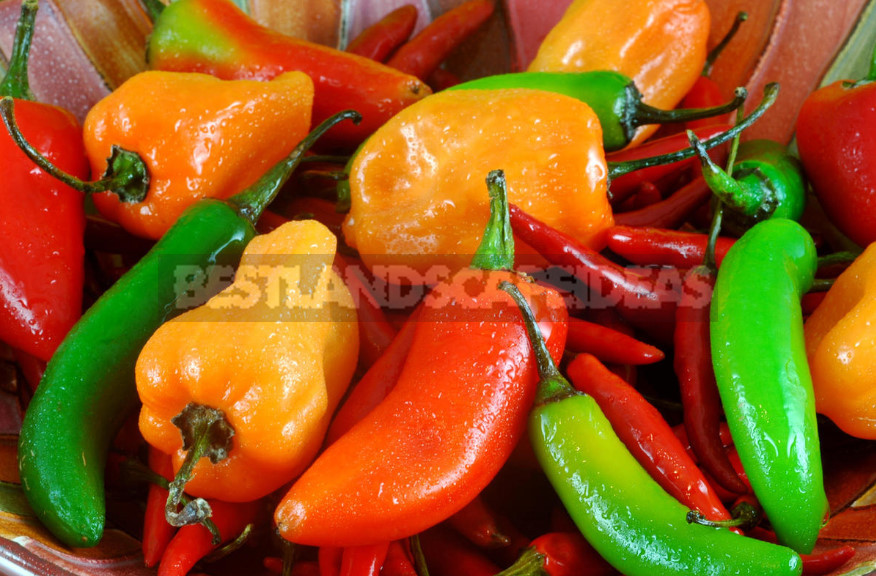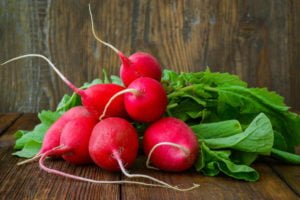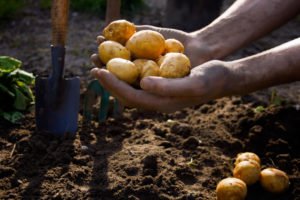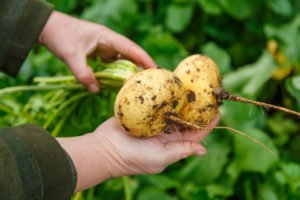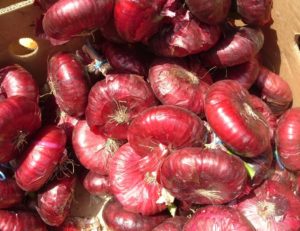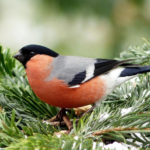Bitter pepper is not the most popular plant in gardens. Apparently, our cuisine is not too acute, and the need for growing this spicy vegetable is limited to one or two bushes. And in vain, because in addition to the taste and benefits of the plant, there is also a very spectacular appearance and a lot of other advantages.
There are many types of red pepper in nature. One of the most intricate forms is a bell that reminds someone of a mushroom, a pumpkin, a patisson and even a UFO. Its taste is also special: slightly sour, fruity at the bottom, and sharp closer to the peduncle. All varieties and hybrids are based on pepper berries. The species differs from others not only in fruits, but also in size, in nature the height of the bush reaches 3-4 m (9.8-13.1 in). In culture, it behaves more unpretentiously, so it can be grown as a houseplant.
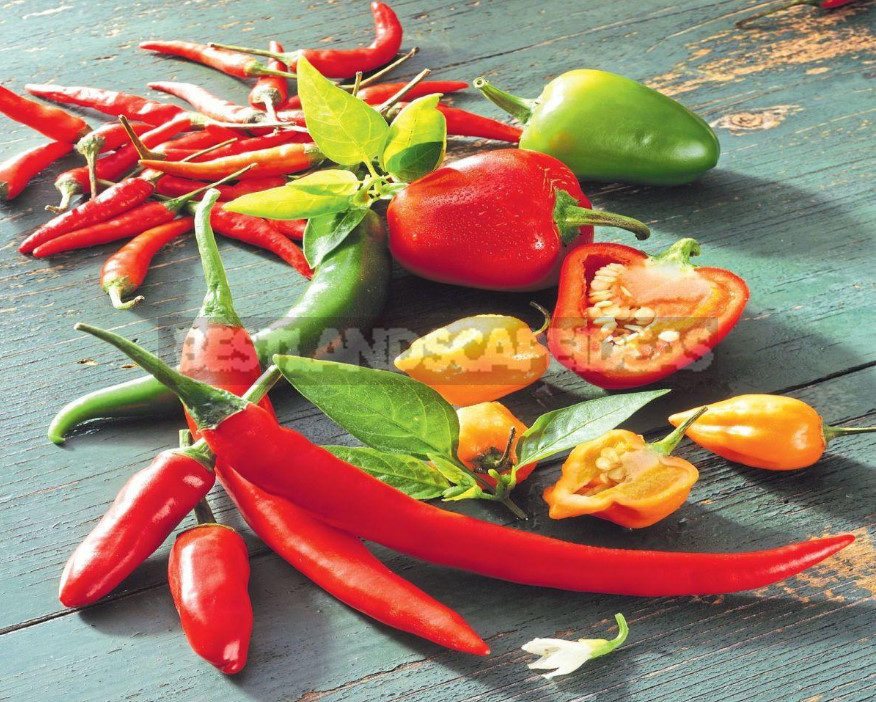
In greenhouses and in the ground, it is important not to overdo it with nitrogen fertilizing, otherwise the green giant will grow without flowers and fruits. It is important to take into account the growing season — it takes from 150 to 200 days from germination to biological maturity, so pepper seedlings should be sown quite early.
There are several new products on the market today:
- The variety ‘Vizier’ is suitable for growing in the open ground and under film shelters. The plant is semi-spreading, high. Glossy fruits are cup-shaped, light green, bright red (25-30 g/0.9-1 oz). The yield when grown under film shelters is up to 3 kg/m2 (6.6 lb/m2).
- Pepper ‘Sharp tongue’ is an early-ripening hybrid, valued for its spicy, fragrant pulp with a high content of vitamins, minerals and mineral salts. It appears on seedlings in late February-early March.
- Pepper ‘F1 Current’ will surprise you with the taste of black currant, which is enhanced by splitting the fruit. Shrub up to 1 m (3.3 ft) high, can be grown both in the garden and on the balcony or patio.

- The ‘Campanula’ variety has larger fruits (70-90 g/2.5-3.2 oz). In the phase of technical ripeness, greenish-white, in biological – bright red. The yield under film shelters is 4-5.5 kg/m2 (8.8-12.1 lb/m2), but it grows well in the open ground.
- Pepper ‘F1 Spicy Bull’ prefers light, loose, rich in organic substances soil. In the open ground is planted after the return of frost. Fruits at the initial stage are colored green, later they turn red (weight 60-100 g/2.1-3.5 oz). The taste is spicy – from spicy to sweet with sourness. These bells will decorate the table and give the dishes a moderate sharpness. The height of the plant reaches 1.5 m (4.9 ft).

- ‘The flying moth F1’ is a medium-ripened hybrid for open ground and film shelters. The bush is 60-80 cm (2-2.6 ft) high. It bears fruit for a long time and abundantly, both indoors and on balconies and outdoors. The fruits are small (30-40 g/1-1.4 oz), bright green, and later yellow – orange with a sharp taste.
- Pepper ‘Double abundance F1’ in the open ground forms only one tier of fruits, and in greenhouses — up to five. It is preserved in dried form for several seasons without losing marketability and taste qualities.
- The peppertree – ‘F1 octopus new Year’ completes the hit parade. This is a mid-late hybrid for greenhouses and front gardens. In greenhouses (with intensive fertilizing, an abundance of heat and light), its height reaches 3-5 m (9.8-16.4 ft). It is characterized by abundant fruiting (up to 300-500 red “bells” weighing 20-25 g (0.7-0.9 oz) and medium-sharp taste ripen on the branches at the same time). The hybrid is decorative and resistant to diseases.
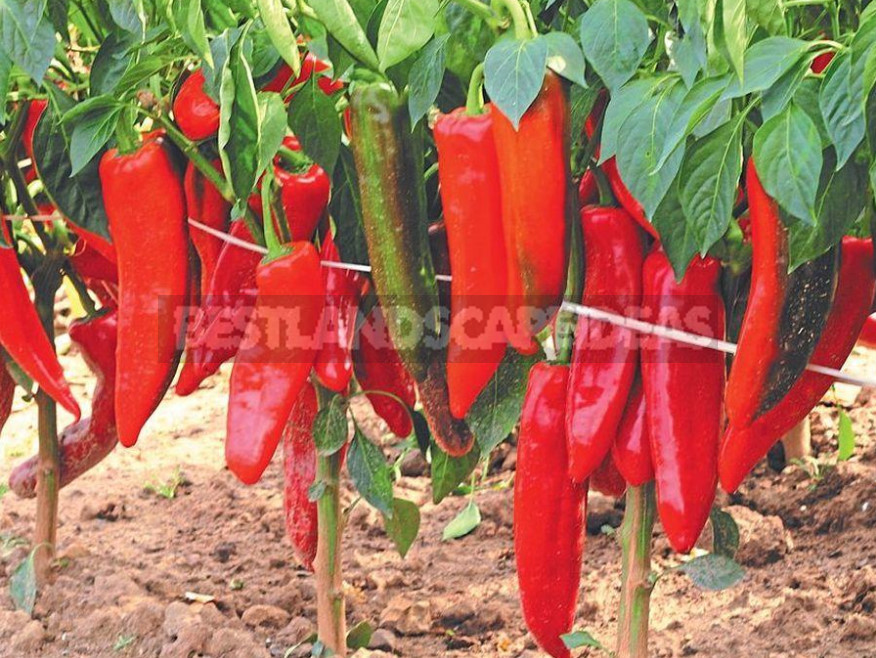
Important: varieties of bitter pepper differ in the degree of sharpness, among them very sharp, sharp, pungent, weak, sharp. When growing this crop, it is important to remember that the sharpness of the fruit depends not only on the variety, but also on the illumination. To get hot pepper, plants need maximum illumination. Note: during cross—pollination, if planted next to hot pepper and sweet, the latter may become spicy.

